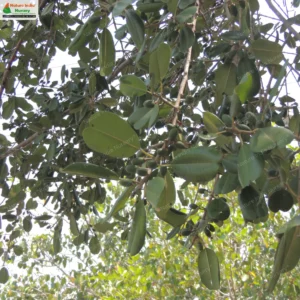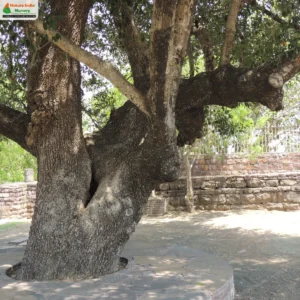Manilkara hexandra, commonly known as Khirni, is a remarkable evergreen tree native to the Indian subcontinent and parts of Southeast Asia. This slow-growing tree typically reaches heights between 12 to 25 meters. Khirni produces small, white or pale yellow flowers that add a delicate beauty to its robust structure. These flowers eventually give way to the tree’s distinctive fruits—edible, oblong to ellipsoid berries that turn a reddish-yellow hue when ripe.
The Khirni tree plays a vital role in supporting local wildlife, providing habitat and food for various bird species, insects, and small mammals. Its flowers attract pollinators like bees and butterflies, while its fruits are a food source for birds and animals. The tree’s versatility and value extend beyond its ecological importance, as it also offers various economic benefits, making it a valuable species in its native habitats.
Habitat
Manilkara hexandra is native to the Indian subcontinent and parts of Southeast Asia.
Planting and Care
-
Soil Requirements: The tree prefers well-drained, loamy soil but can tolerate a range of soil types, including sandy and clay soils.
-
Watering Guidelines: While the tree is drought-tolerant once established, regular watering is essential during the initial growth period. Ensure the soil remains moist but not waterlogged.
-
Sunlight Needs: The tree thrives in full sunlight. Ensure it receives ample sunlight for optimal growth.
Additional Information
-
Wildlife Significance: The tree provides habitat and food for various bird species, insects, and small mammals. Its flowers attract pollinators like bees and butterflies, while its fruits are a food source for birds and animals.
-
Economic Value: The tree’s wood is hard, durable, and heavy, making it ideal for construction, furniture, and agricultural tools. Various parts of the tree are used in traditional medicine to treat ailments like thirst, emaciation, bleeding disorders, ulcers, bronchitis, jaundice, fever, and arthritis. The tree produces nutritious berries that are consumed locally and can be sold in markets, providing an additional source of income for local communities.





























